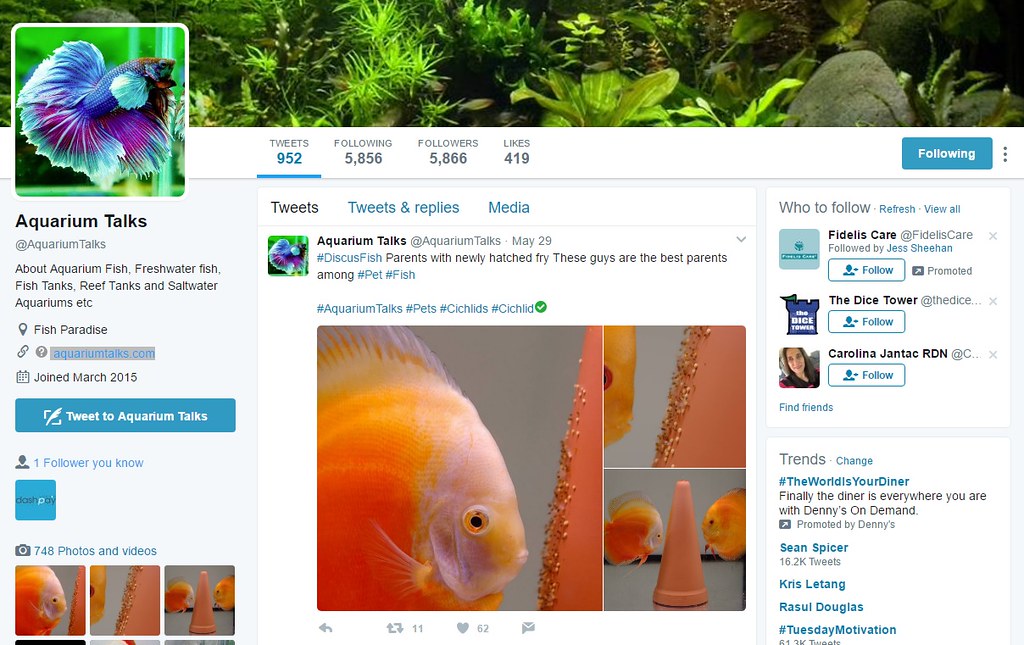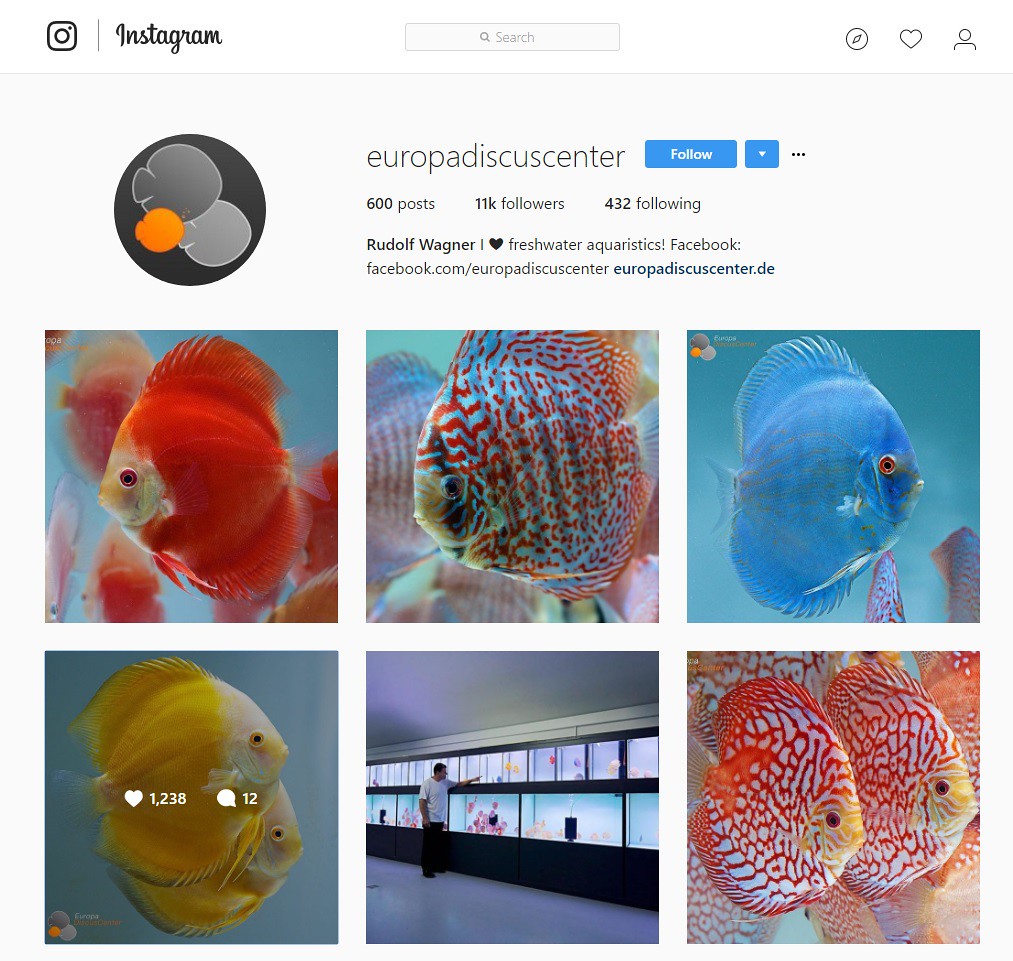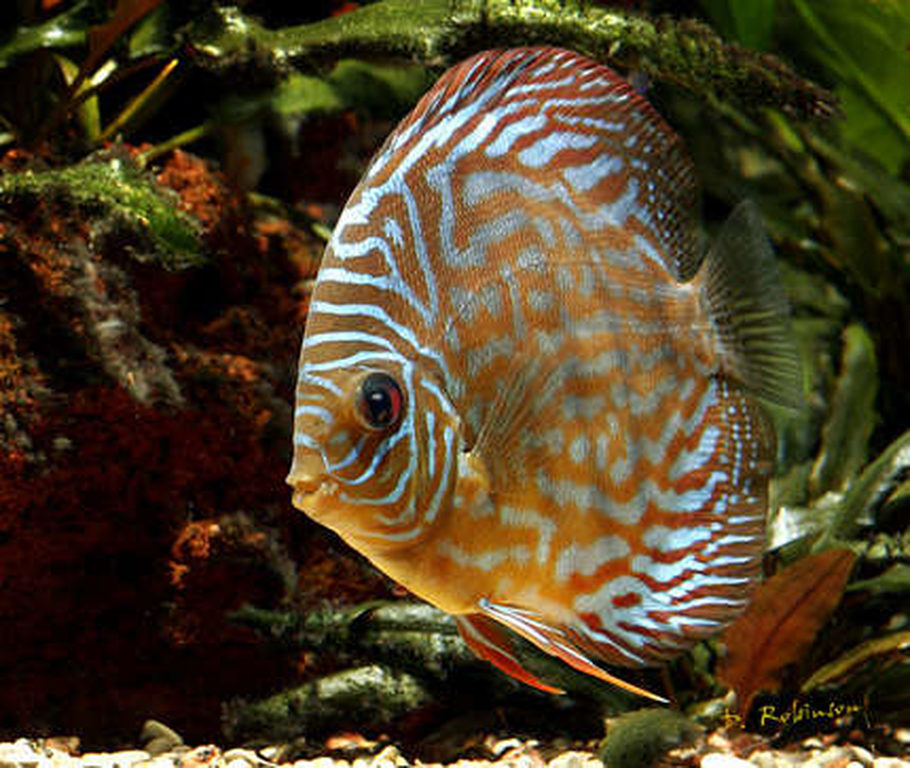THE BRIGHT AND COLORFUL DISCUS FISH: SPRING 2017 AQUARIUM TRENDS

Updated
Discus fish are some of the most brightly colored fish in the animal kingdom. Keep reading to learn about popular trends in discus fish this spring.
Discus fish are a unique and beautiful species that can transform your home aquarium into a colorful aquatic paradise. If you are thinking about adding discus fish to your tank, take the time to learn as much as you can about them and their needs. Keep reading to learn more about these beautiful fish and what discus fish-related topics are trending this spring!
Discus Fish – The Best Parents in the Aquarium Industry
On May 29, Twitter handle @AquariumTalks posted a picture of a beautiful pair of orange discus fish caring for their newly laid eggs. The photo was posted with the text, “Parents with newly hatched fry… these guys are the best parents among #Pet #Fish.”
On May 29, Twitter handle @AquariumTalks posted a picture of a beautiful pair of orange discus fish caring for their newly laid eggs. The photo was posted with the text, “Parents with newly hatched fry… these guys are the best parents among #Pet #Fish.”

Cichlids in general are known for being some of the most dedicated parents in the aquatic world, but discus fish are particularly good at parenting. According to an article posted by the North American Discus Association (NADA), the key to breeding discus fish is to select and thoroughly condition a breeding pair. Purchasing a proven breeding pair can be expensive, but it is well worth it if you want to have a successful spawn. If you’re up to the task of starting from scratch, however, you can purchase a group of five or more juvenile discus fish and raise them to adulthood. Hopefully, over time, a pair or two will naturally form and you can start conditioning them for breeding around 9 to 14 months of age.
Once you have a breeding pair of discus fish, you can look forward to some interesting courtship behaviors. Pre-spawning rituals can go on for days or they can last just minutes, but it is always a sight to behold. The male and female will face each other and engage in a sort of dance and then select a suitable surface for breeding before they spawn. You can purchase special “discus cones” to act as a breeding surface for your discus fish – your discus fish will naturally gravitate toward it for spawning. After spawning, you can expect the parents to guard their eggs until hatching. Once the fry become free-swimming they should attach to the parents for a few days until you need to start feeding them.
Once you have a breeding pair of discus fish, you can look forward to some interesting courtship behaviors. Pre-spawning rituals can go on for days or they can last just minutes, but it is always a sight to behold. The male and female will face each other and engage in a sort of dance and then select a suitable surface for breeding before they spawn. You can purchase special “discus cones” to act as a breeding surface for your discus fish – your discus fish will naturally gravitate toward it for spawning. After spawning, you can expect the parents to guard their eggs until hatching. Once the fry become free-swimming they should attach to the parents for a few days until you need to start feeding them.
Acclimating New Discus Fish – Feeding Tips for New Discus
On May 24, 2017, member Spilo of the Simply Discus online forum posted a question regarding new discus fish not eating. This user purchased two pairs of discus from a reputable source and followed all instructions, but the fish still refused to eat. This issue is not uncommon with discus fish, as they are some of the more sensitive cichlid species. Most cichlids are fairly hardy and adaptable to different environments but discus fish tend to be a little bit more finicky, especially when it comes to breeding.

According to discus hatchery Gwynnbrook Farm, it is important to cycle the tank and establish high water quality before introducing discus fish into their new tank. The ideal temperature is 80°F with a pH of 6.5 and levels of ammonia, nitrites, and nitrates at zero. When you are ready to acclimate your discus fish, test the water chemistry in the bag and make adjustments to your tank to match it. Float the bag containing your fish in the new aquarium to acclimate them to the temperature then net them individually and add them to the tank.
Once your fish have been added, raise the temperature to 82°F then turn off the lights and keep the tank dark until the next day. Avoid feeding your new discus until the next morning as well. If you have trouble getting your discus fish to eat, as did Simply Discus member Spilo, keep being persistent in your attempts and use high-quality foods. Many discus owners report success with blackworms, even in discus fish that refuse all other foods. Other users report their discus fish holding out for a month before eating, so just keep trying.
Unique Color Morphs in Discus Fish
Unique Color Morphs in Discus Fish
On May 30, 2017 the Instagram user Europadiscuscenter posted a picture of a juvenile red melon discus. This fish has bright orange all-over color with a pale face and clear caudal fin. This particular color morph has a more solid coloration than many discus fish, and it looks like an orange version of the Millenium Golden Discus pictured in a post from May 26th, 2017. Discus fish are some of the most brightly colored freshwater fish in the world. There are four main strains of discus fish and dozens of color morphs branching off from each strain. The four strains are listed below:
Heckel Discus (Symphosodon heckel) – These discus have a rounder shape than most and a reddish body color with turquoise veins running through it. Most of these discus fish have fins the same color as the body, though the caudal and pectoral fins may be clear.
Brown Discus (Symphosodon aequifasciata axelrodi) – These discus fish are typically yellow-brown in all-over color with iridescent stripes and spots covering the body as well as the dorsal and anal fins – the caudal fin is usually clear. This is actually a subspecies of the green discus fish.
Blue Discus (Symphosodon aequifasciata haraldi) – These discus fish vary in solid color from yellow-brown to light turquoise with dorsal and anal fins that are a deep iridescent blue or red color.
Green Discus (Symphosodon aequifasciata aequifasciata) – These discus fish are yellow-brown in color with red spots on the lower part of the body and turquoise to blue markings on the head and upper parts of the body. The anal and dorsal fins are turquoise with red markings.

The four strains of discus fish listed above are known as classes 1 through 4 – there is a total of 14 classes of discus fish. Here is a quick overview of the other classes:
- Class 5 – This class includes discus fish with thick horizontal striping and vertical stress bars – turquoise discus is a variety belonging to this class.
- Class 6 – These discus fish have fine lines or striations and dots covering the gill plates with a maximum of 14 vertical bars. The snakeskin pattern belongs to this class.
- Class 7 – This class of discus fish includes those with more complicated patterns such as pearl discus, ring leopard discus, and checkerboard discus
- Class 8 – These discus fish are the spotted varieties such as domestic red-spotted green, red leopard, and leopard-spotted snakeskin
- Class 9 – This is an open pattern class that consists largely of unusual patterns like the albino snakeskin or the albino spotted discus fish
- Class 10 – This class is for the blue discus fish including cobalt and blue diamond discus fish
- Class 11 – This class is for the red discus fish such as red eagle and red snakeskin
- Class 12 – This class is for the yellow discus fish – examples include golden, yellow crystal, pigeon blood, and golden spotted
- Class 13 – This class is for the white discus fish including the snow white variation and white pigeon blood
- Class 14 – This is an open class for discus fish that don’t fit neatly into other classes.
When you are researching discus fish, pay particular attention to their dietary needs because a high-quality diet for discus fish is essential if you want them to achieve their full potential for bright and beautiful coloration. Live foods are great for discus fish because they are rich in nutrients, though you should also pick out a high-quality staple diet such as a flake food or pellet designed specifically for discus fish. Be sure to offer a variety of foods to make sure your discus get the nutrients they need.
Keeping discus fish can sometimes be a challenge but it is well worth it to see their beauty each and every day. So, do some research to determine whether discus fish might be the right choice for you and your aquarium. Good luck with your discus fish!
comments powered by Disqus











































